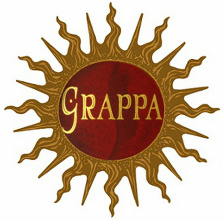 Already the last day of the Master Quill Grappa Week, and we’ll close this off with a Grappa of one of the oldest and most important Grappa Distilleries around today. Nardini has a market share of 25% and produces 4 million bottles per annum.
Already the last day of the Master Quill Grappa Week, and we’ll close this off with a Grappa of one of the oldest and most important Grappa Distilleries around today. Nardini has a market share of 25% and produces 4 million bottles per annum.
The Nardini distillery was founded by Bartolo Nardini in 1779. Bartolo bought an inn (Osteria al Ponte) near the Bassano bridge a.k.a Ponte Vecchio, across the Brenta river. This inn became the Grapperia Nardini and still exists today. Nardini is still run by members of the Nardini family, by now the seventh generation. Today Nardini has two distilleries: one in Bassano del Grappa and one in Monastier where besides Grappa also Liqueurs and Amaros are made.
This Nardini grappa has been distilled two times in a traditional, a discontinous and a vacuum steam still, across both distilleries. The Grappa from both distilleries are then blended and aged for at least three years (according to the Italian site) or five years (according to the UK site), in Slavonian oak barrels. The grape pomace is taken only from the foothills of north-eastern Veneto and Friuli.
 Color: White wine
Color: White wine
Nose: Old dried grass. Apple skin and cold, lightly sweet apple compote (as opposed to an acidic one). Very restrained. Brooding, you sense a lot underneath. Vanilla and oak, licorice and juniper. Unlit cigar, excellent Havana Tobacco. Warm the glass up in your hand, very important for this liquid. The smell is natural, lightly fruity, perfumy and the usage of wood is apparent. Lots of Grappa’s are “enhanced” with sugar, but this one hasn’t got the sweet nose like many others. Extremely lovely stuff, this Grappa.
Taste: Cigar box and tobacco. Lightly sweet, but all in good balance. The sweetness, that is mostly apparent when entering the mouth, is balanced with tannins from the wood (can’t imagine it coming from the grapes). Pine and cedar. The higher ABV of 50% really delivers the aroma’s of this Grappa perfectly. Underneath the cigar (box) and the Tobacco lies a great fruitiness. Fresh green apple.
From a Whisky drinkers perspective a very nice Grappa. Balanced, dry, noticeable wood influence without the predominant hay and grass notes. What a stunning nose. It gives off layers and layers of niceties. Easily the best Grappa I’ve tasted. Great product. I’m impressed by the nose, I just hope all batches are at least as good as this one, (L.08/07). This is a must!
With this Nardini we conclude our (ad)venture in the world of Grappa. Grappa had, and maybe still has a troublesome reputation. Lots of people consider it to be a not-so-nice and harsh distillate. I guess the lesser gods of Grappa making are trying to do something about that by adding lots and lots of sugar to their products as could be seen with the first few reviews from this week. I for one do not like that. Luckily also good and very good Grappa is made, although outside of Italy we only know the big brands, but insiders from Italy know there are lots and lots of artisanal Grappa producers who make very good Grappa’s, so maybe it is time to plan a holiday to Italy. Still there are a few very good Grappa’s around that are widely known, like this Nardini. Not breaking the bank and making a very good Grappa. Salute!
Points: 88
 Color: Light citrus yellow, straw.
Color: Light citrus yellow, straw. Color: Colorless.
Color: Colorless. Moscato is a sweet grape with a very recognizable aroma, both in smell and taste. It is one of the oldest and widely planted white grape varieties in Italy. A well-known Wine made with this grape variety for instance is Moscato d’Asti. Lots of variants of this grape are planted all over the world. Unlike many grape varieties used for Wines, the Moscato grape variety is very nice to eat too.
Moscato is a sweet grape with a very recognizable aroma, both in smell and taste. It is one of the oldest and widely planted white grape varieties in Italy. A well-known Wine made with this grape variety for instance is Moscato d’Asti. Lots of variants of this grape are planted all over the world. Unlike many grape varieties used for Wines, the Moscato grape variety is very nice to eat too. Color: Light sparkling gold.
Color: Light sparkling gold. Color: Almost colorless, with a slight green haze.
Color: Almost colorless, with a slight green haze. Color: Light copper gold, with a slight pink hue
Color: Light copper gold, with a slight pink hue